Condensation laden windows is a sure sign the humidity level within your home is too high. Aside from fogging your windows and being irritating to clean off, the side effects of condensation can be damaging to your home and even your health.
In this post, we’ll look at some of the key ways you can absorb or mop up condensation quickly. After this we’ll uncover what causes mould, how it could be damaging your home and your health and explain why it doesn’t have to be a constant problem. We’ll also provide tips on how to reduce or eliminate it entirely.
But, to begin with, let’s look at some quick ways you can absorb condensation from your windows and why this might not be your best option.
Quick Ways To Absorb Condensation
1) Toweling it off (Not Recommended)
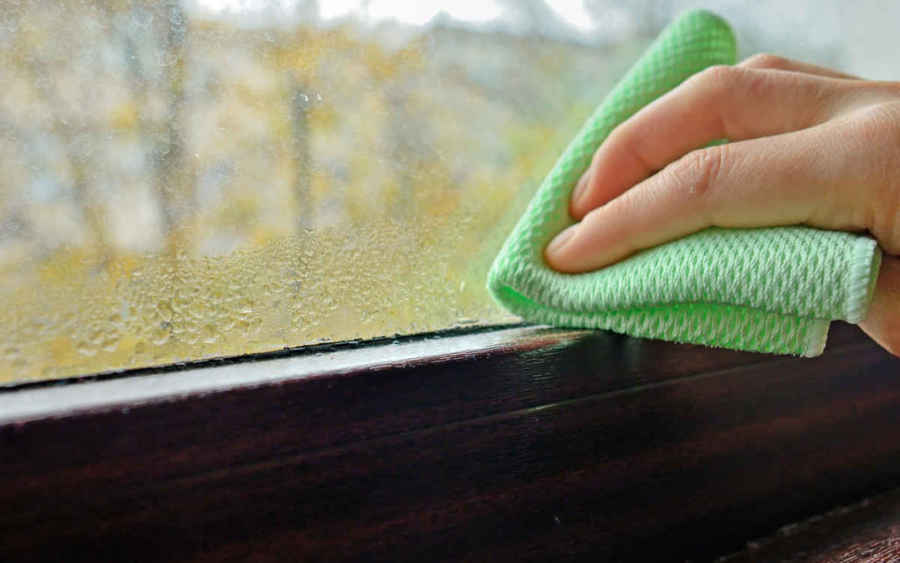
One of the methods we often see recommended is towelling the moisture off. But, this is far from an ideal solution for a couple of core reasons.
The first is that it requires effort every day and really isn’t all that effective. The towel can quickly become saturated and often leaves smears on your windows. This problem is pronounced if condensation occurs across more than just one or two windows in your home and will require several fresh towels to finish the job properly.
The second is that you end up with a wet towel that needs drying every day. And, if you dry it on a radiator or clothes horse, you’ll end up releasing the moisture you just mopped up back into your home where it can deposit as condensation again.
2) Window Vacs (Effective and Fast)
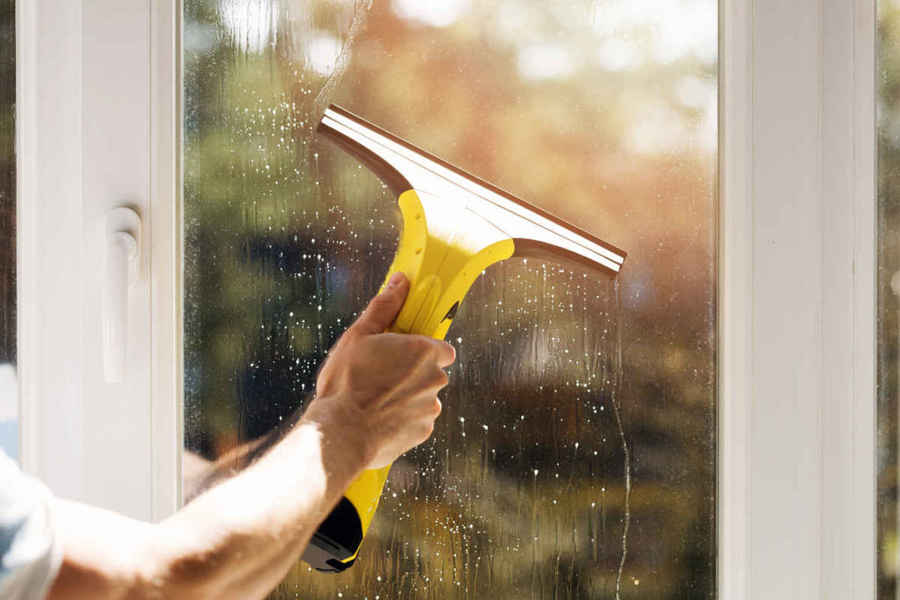
Taking on the appearance of a flexi-blade with a bulky handle window vacs are very effective at sucking condensation from windows. Plus, the water you collect can be easily disposed of by emptying it into your sink and, most importantly, out of your home.
When discussing window vacs it’s difficult not to mention those made by Karcher, since they have been extensively advertised on TV for at least half a decade. Once expensive, Karcher’s vacs have dropped in price considerably in recent years. However, if you feel they are still too expensive you can also pick up one of their many cheaper clones here.
3) Desiccant Pots and Moisture Absorbers (Mixed Results)

Whilst these are often banded around as an ideal solution for condensation. We would have to disagree. They lack the capacity to remove anything but the mildest of humidity problems in small cupboards or confined spaces such as in your car.
And, whilst there are more ‘powerful’, larger capacity absorbers such as the Aero 360. The results and opinions on how effective they are divided at polar extremes. Buyers often wax lyrical as to their effectiveness or complain they don’t work at all.
Not only this but you need to consider the cost of refill cartridges (since the Aero 360 is only single use) and the cost this can incur with regular use. The moisture-absorbing cartridge also dissolves into the collection tank as it works creating an, often blue, liquid. Some buyers have reported this liquid can stain paintwork and carpets if spilt.
Instead of moisture traps, we’d recommend using a small Peltier dehumidifier such as the ProBreeze 500ml. Since it is low cost, quiet, performs very well and costs only pence per hour to use. But even so, these low power devices will really only be able to deal with one room and are not adequate to eliminate condensation across the home.
Are There Any Better Solutions?
Whilst cleaning condensation off your windows is certainly a visibly quick way of dealing with the problem it is not addressing the core issue. Understanding how condensation forms and how to prevent it from occurring entirely is a much better solution.
And, given the damage prolonged condensation can cause, prevention really is better than a cure.
What Causes Condensation On Windows?
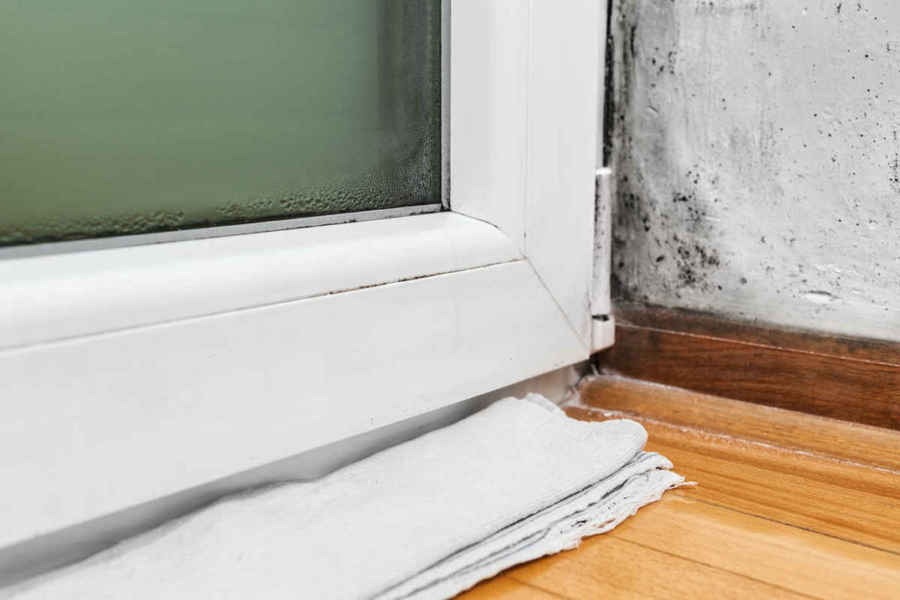
Similarly to damp, condensation can sometimes be viewed as being caused by a structural defect. But, if condensation is forming on the inside of your windows lifestyle choices are invariably the cause.
Over the course of a day we produce a lot of moisture within our home. Daily activities such as cooking, bathing and even breathing release moisture into the air. In fact, a 15-minute shower can release 600g of water vapour into the air. Whilst drying clothes indoors can release a whopping 1500g.
All of the moisture we produce is held by the warm air in our home. And, the ability of air to hold water is related to its temperature. The warmer the air, the more water it can hold. When moist air comes into contact with a surface at a lower temperature it is unable to retain as much moisture and some of it is released and deposits as condensation on the cooler surface – in this case, a windowpane.
Generally speaking, the higher the humidity level within your home the more condensation will form on your windows.
What Damage Can Condensation Cause?
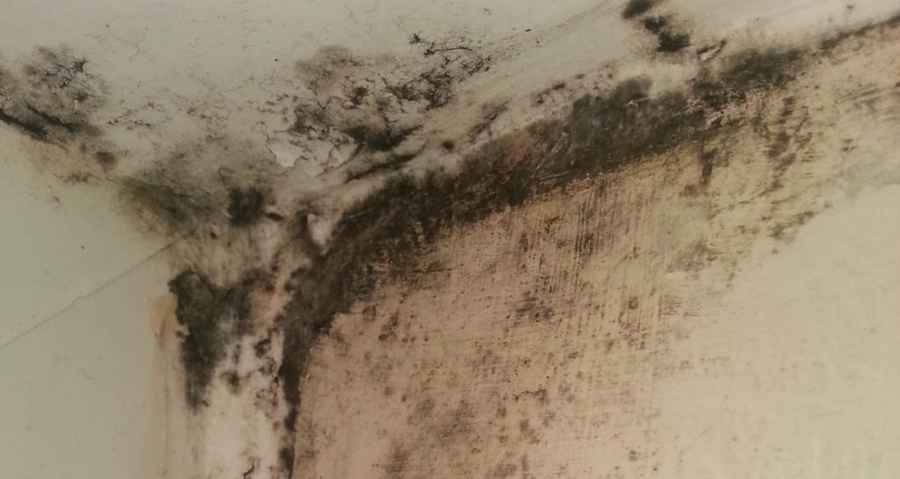
Whilst condensation appears to cause no damage, over time it can cause wooden windows to rot, mould to grow on uPVC windows and paint to blister and flake away around windows. It can also run down windows and form pools on your window sills causing damage to the sill itself over a prolonged period.
Can Mould Harm You?
Mould and mildew are both types of fungi that thrive in damp conditions and where airflow is generally quite poor. They cause damage by spreading seeds and spores across the surfaces they inhabit. The problem is that some of these spores become airborne where they can be inhaled or come into contact with the skin.
It is important to note that whilst this is not always harmful, contact/inhalation can lead to respiratory problems and, in some cases infections. Particularly in the elderly, the very young or those that suffer from immune system suppression, have existing breathing allergies or asthma.
It is also known the heavy inhalation can induce allergies in those people who were not previously sufferers. And, in the most severe cases, can even cause asthma.
The key signs you need to be aware of that indicate mould spores might be causing minor health issues are general breathing problems (such as wheezing or shortness of breath), itchy or watery eyes and persistent cold-like symptoms such as sneezing, coughing, headaches and fatigue.
One of the most severe reactions to mould inhalation is upper respiratory tract infections. This is caused by an over-response of the immune system as it attempts to fight off the high levels of inhaled mould spores.
A Quick Note About Mould and Cancer:
Many people are concerned about the link between mould and cancer. This is due to a substance produced by some mould called mycotoxins. It is not known why certain types of fungi produce mycotoxins since they are not a necessary part of the fungi’s growth or development.
Prolonged exposure results in poisoning called Mycotoxicosis and, in particular, a type of Mycotoxin called aflatoxin is linked to liver cancer. However, it is worth mentioning that it is not fully understood why this occurs and cases in humans are incredibly rare. In virtually all cases mild mould in the home does little more than become an irritant as described above.
How to Prevent Condensation

Following the tips in this section will lead you on your way to reducing or eliminating condensation entirely. Many of the our suggestions are simple and require nothing more than a small lifestyle change to implement.
However, if our basic tips won’t work for you we have included some that require the purchase of equipment of minor modifications to implement. That said, even those tips which do require an outlay have been chosen because the outlay is minimal and still simple to implement.
1) Prevent Sources of Moisture Spreading
Two of the main culprits that create a lot of moisture are cooking and bathing.
The problem is that because of a process known as vapour pressure the moisture created by either will spread throughout your home as it attempts to reach a state of equilibrium. This increases the overall Relative Humidity (RH) within your home and creates condensation.
A simple solution is to keep the door to your kitchen and bathroom closed whilst they are in use (and after being used) to prevent this from happening.
2) Ventilate
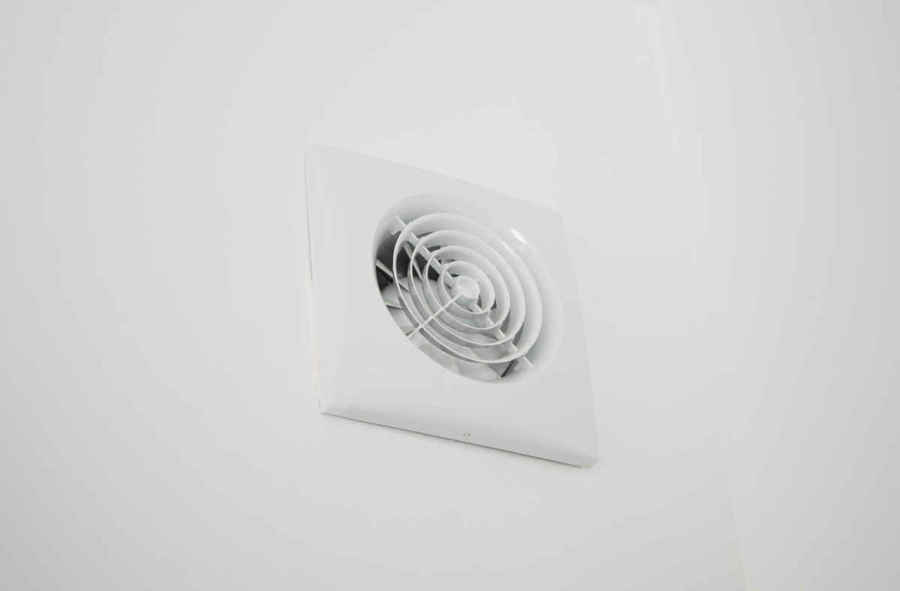
Condensation in your home is less likely to occur if moisture levels do not have the chance to increase in the first place.
Using your extractor fan whilst cooking or bathing draws the out humid air as it is created. Leaving your window ajar also provides the same effect.
Many extractor fans feature a hygrometer that keeps the fan running until a humidity threshold is reached that mould cannot easily grow in (usually around 50% RH). However, if yours does not feature such a device a simple tip is to leave it running for 10-15 minutes afterwards.
3) Drying Your Clothes Indoors

During the winter months drying clothing outside is rarely a viable option. As such many people dry their washing indoors using a clothes horse or by hanging the wet clothes over radiators.
The problem occurs when the, on average, 2 litres of water released from your washing into your home raises the overall relative humidity. This not only causes condensation on windows but can also deposit it on walls and ceilings.
In fact, this exact problem has caused many an argument between tenants in rented properties and their landlords since the resulting mould growth this causes can often require removal or, in worst cases, the repainting of walls.
In these instances, it is often recommended to use a tumble dryer. However, not everyone owns a tumble dryer and those that do can sometimes be concerned about the running costs.
To circumvent this problem you could dry your washing in one room only. You should also keep the room to this door closed and the window slightly open to allow the moisture to escape. This will prevent the humidity from spreading across your home and also help limit the condensation build-up in the rooms you use to dry washing.
Another way to bypass this problem is to invest in a compressor dehumidifier (we’ll cover dehumidifiers fully in one of our later tips). Many have specific laundry dry functions and are very cost-effective to run (usually only around 2-3p per hour), making them an affordable solution when compared to an energy-hungry tumble dryer.
4) Keep Your Home Warm

Generally speaking, warmer homes won’t suffer so badly from condensation. Although various factors play a role in this such as your heating system, the type of windows and airflow in your home.
For example, gas fires produce moisture as they burn and single glazed windows are unable to provide a thermal barrier between the warm air in your home and the cold air outside. As such, they form a cold surface, ideal for condensation to develop. Which bring us onto our next tip…
5) Window Insulation Kits
Sometimes incorrectly referred to as secondary double glazing, window insulation kits provide an extra insulating barrier of air and are ideal for homes with single glazed windows or even poor/faulty double glazing.
Most often these kits consist of a plastic film and some securing tape. Once the plastic is stretched over your window and held in place by the tape the film can be shrunk into place using a hairdryer. This provides an airtight seal and, most importantly, creates an insulation air barrier.
These kits are cost-effective and simple to install. The downside is they prevent the window opening once in place (which makes it difficult to allow fresh air in and humid air out) and are really aimed as a temporary solution.
6) Dehumidifiers
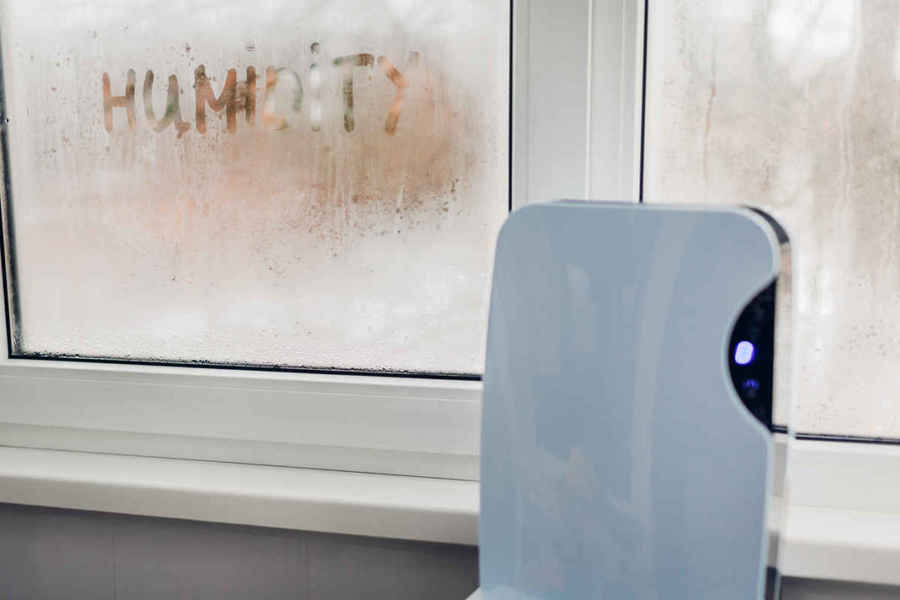
Last on our list of recommendations to tackle condensation is the humble dehumidifier. Because these appliances are designed to suck humidity out of your home they are also one of the most effective and simple ways to deal with condensation.
Many can be configured to monitor the relative humidity levels within your home and only work to reduce them when required. Others, such as the Meaco 20L Platinum, are powerful enough to work across the whole home and can simply be set in one location and left to work. You can read a full guide on selecting the right dehumidifier for your home here.
Conclusion
Whilst it might be tempting to simply remove condensation on a daily basis this is often not the best solution. Over time it can cause damage and result in ugly and harmful mould growth. The best solution is to stop it forming in the first place.
We hoped this guide has helped show you the simplest ways you can rid your home of condensation and that doing so isn’t complicated or expensive at all.






